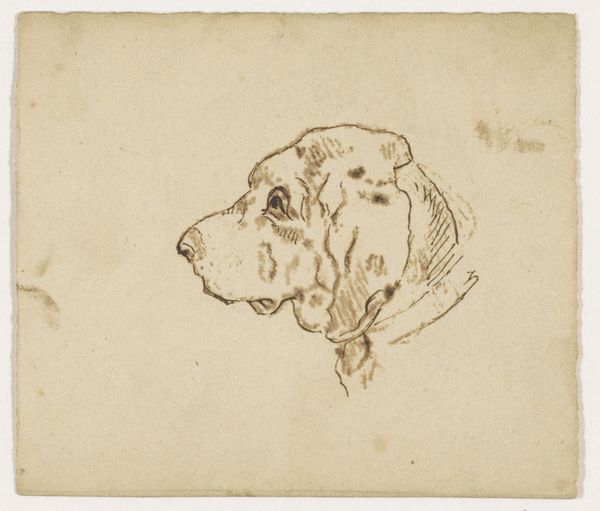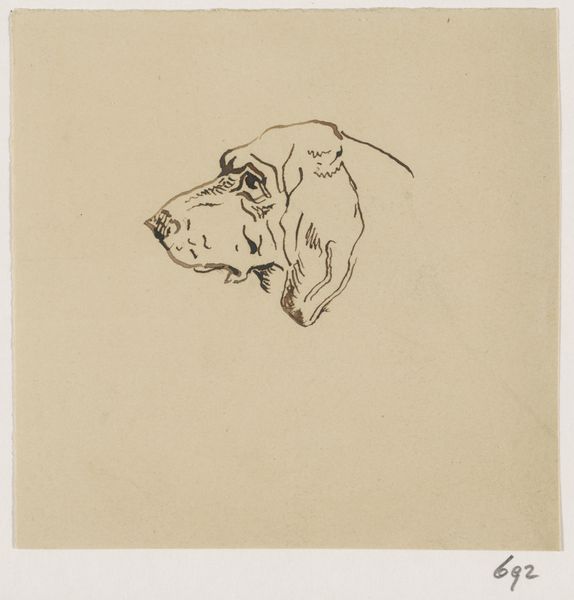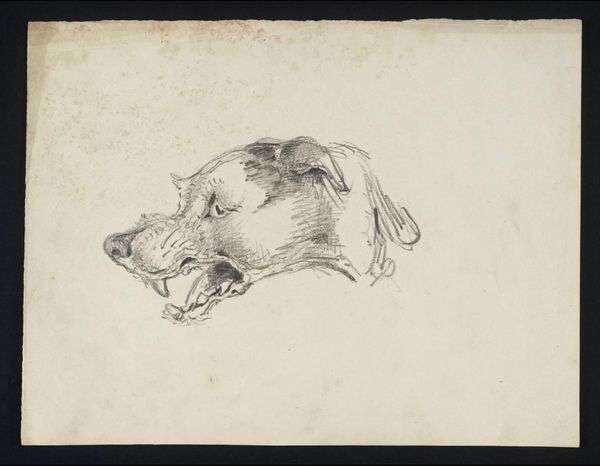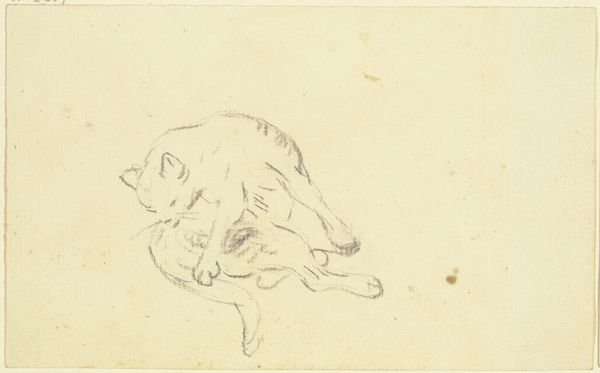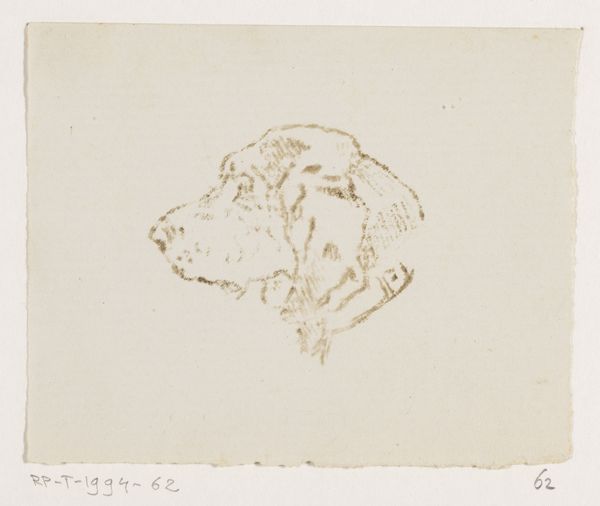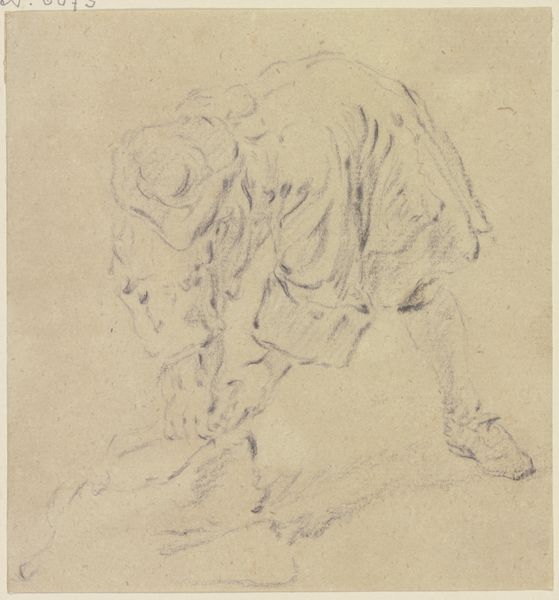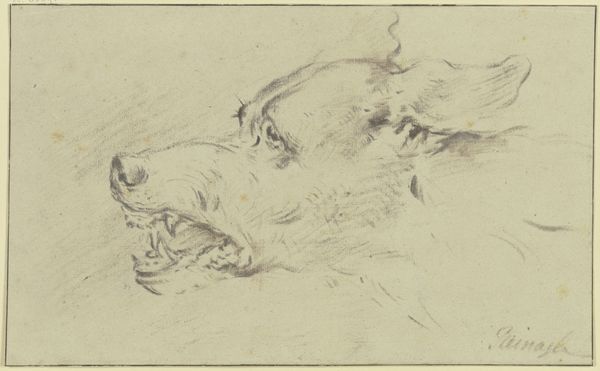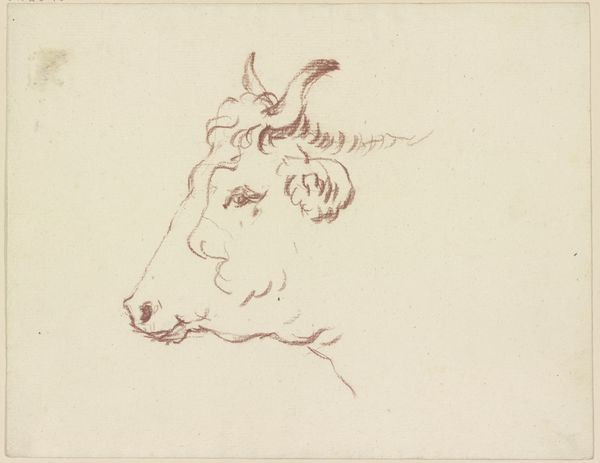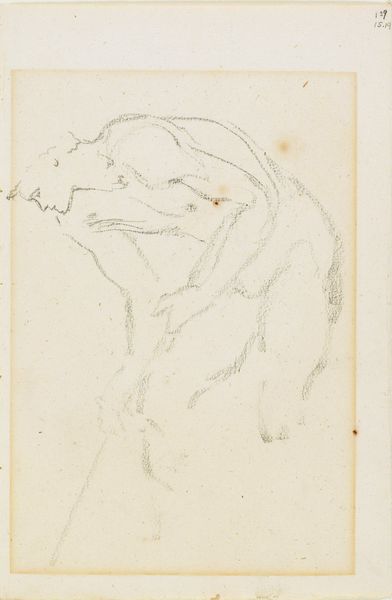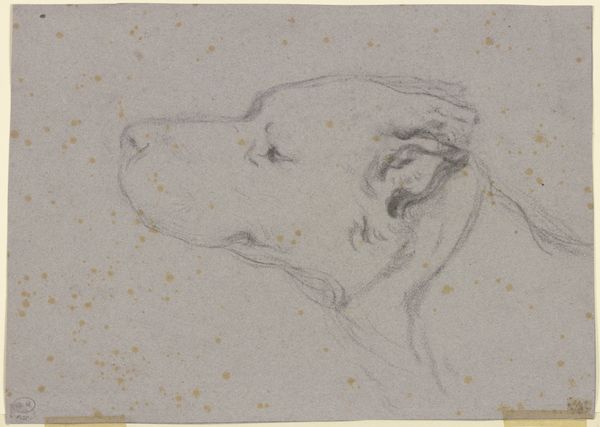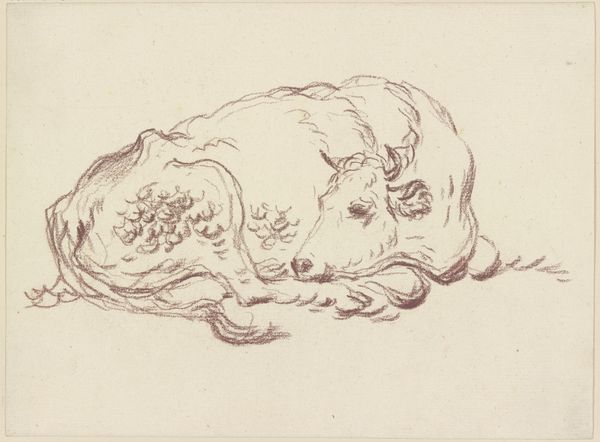
drawing, pencil
#
portrait
#
drawing
#
pencil
#
realism
Dimensions: height 83 mm, width 103 mm
Copyright: Rijks Museum: Open Domain
Curator: Allow me to introduce Johannes Tavenraat's drawing, "Kop van een jachthond," which translates to "Head of a Hunting Dog," estimated to have been created between 1840 and 1880. It's currently housed here at the Rijksmuseum, rendered in pencil on paper. Editor: My initial impression is one of profound softness. The dog's gaze and the almost tentative lines create an immediate intimacy despite its static pose. There is an incredible control with just the humble pencil medium to capture a life. Curator: Indeed. The medium itself speaks volumes. Pencil, being readily accessible, situates this piece within the context of sketching and preliminary studies, potentially for a larger, more formal work. The materials denote accessibility of the time with such materials. Editor: Yes, but consider how Tavenraat manipulates the pencil’s inherent qualities. The varying pressure creates subtle tonal shifts, giving the dog's fur a palpable texture. Look closely, and you'll notice the confident strokes that define the contours of the head, contrasted with the delicate shading around the eye, the artist beautifully models it with simplicity. Curator: Absolutely, the societal role of hunting dogs during this period is crucial to understand. They weren't merely pets; they were working animals, status symbols intertwined with aristocratic culture and labor, serving in practical ways to secure food. The quality in his posture suggests labor and status. Editor: But it's the expressiveness that elevates this sketch beyond mere utility. Notice the slightly drooping ear and the wistful look in the dog's eye. These details lend a sense of character. Consider how this one canine's depiction mirrors certain human portraits in terms of sentimental representation. Curator: The economic implications are relevant too. Who commissioned the artwork, what function did it serve and how does it fit within the broader culture of commodified nature during that time? The accessibility and price point would likely dictate that audience. Editor: An intriguing counterpoint. Whether study or finished portrait, it displays careful consideration of line, value, and composition, suggesting a self-contained artistry, which speaks quietly. The restraint shown speaks, however softly, as art. Curator: I appreciate how your perspective highlights that tension, even at play, within these artworks of history, and their roles in the wider cultural context. It’s important that the discussion is expanded in the scope of this study as art! Editor: And, perhaps by isolating and examining the artistic process within this historical framework, we learn to view art both critically and contemplatively, I'd say this can transform our engagement.
Comments
No comments
Be the first to comment and join the conversation on the ultimate creative platform.
